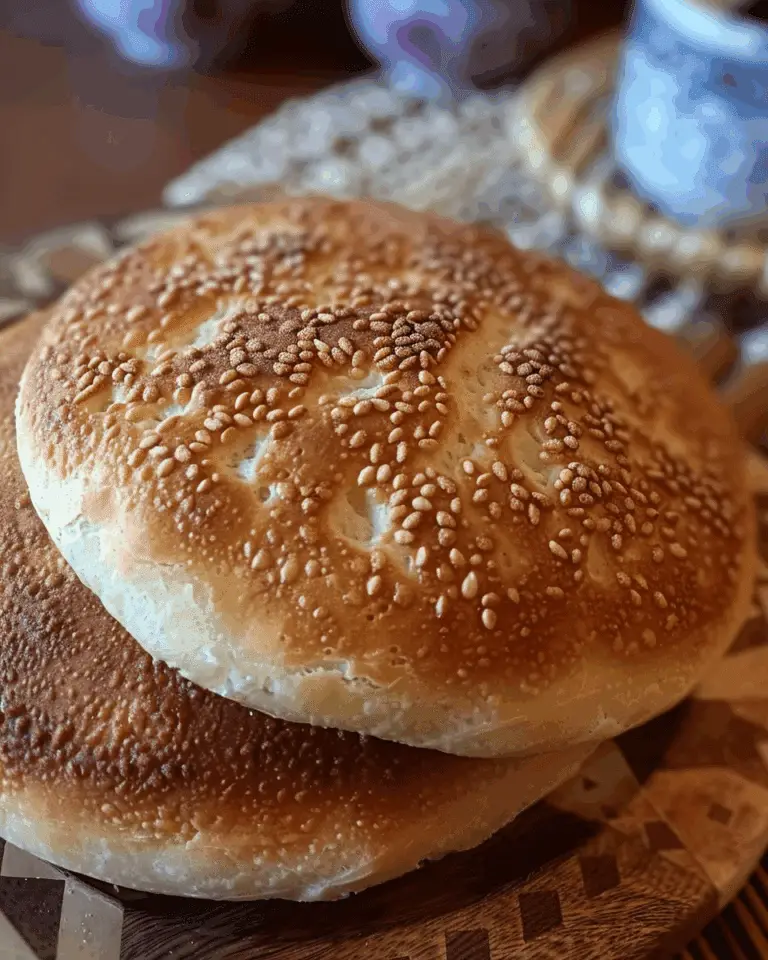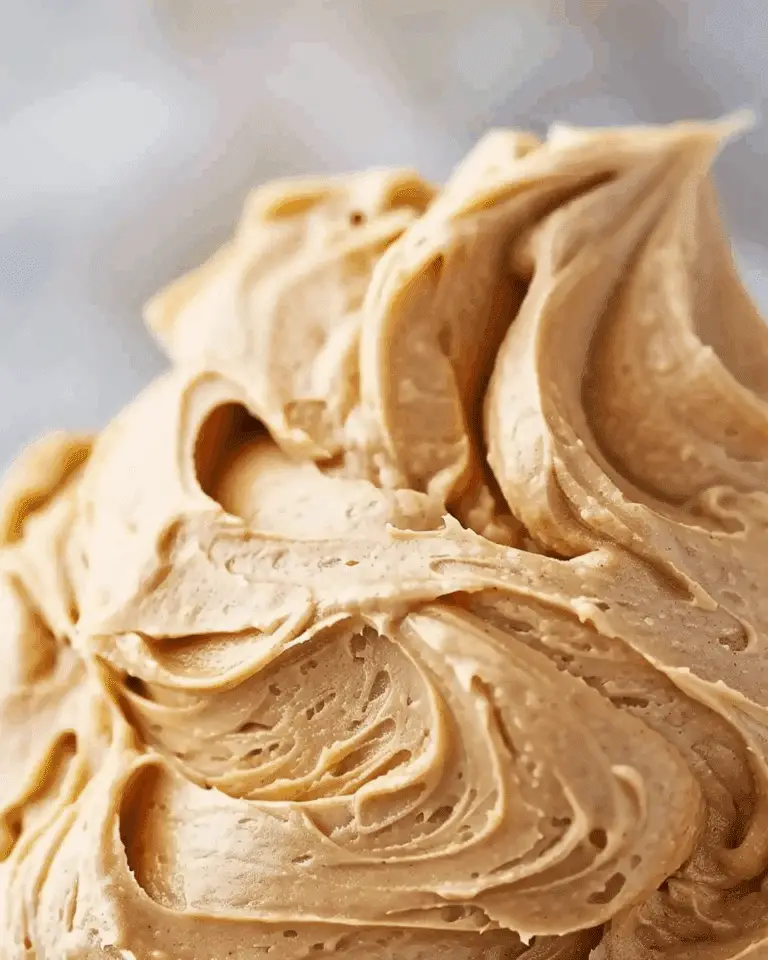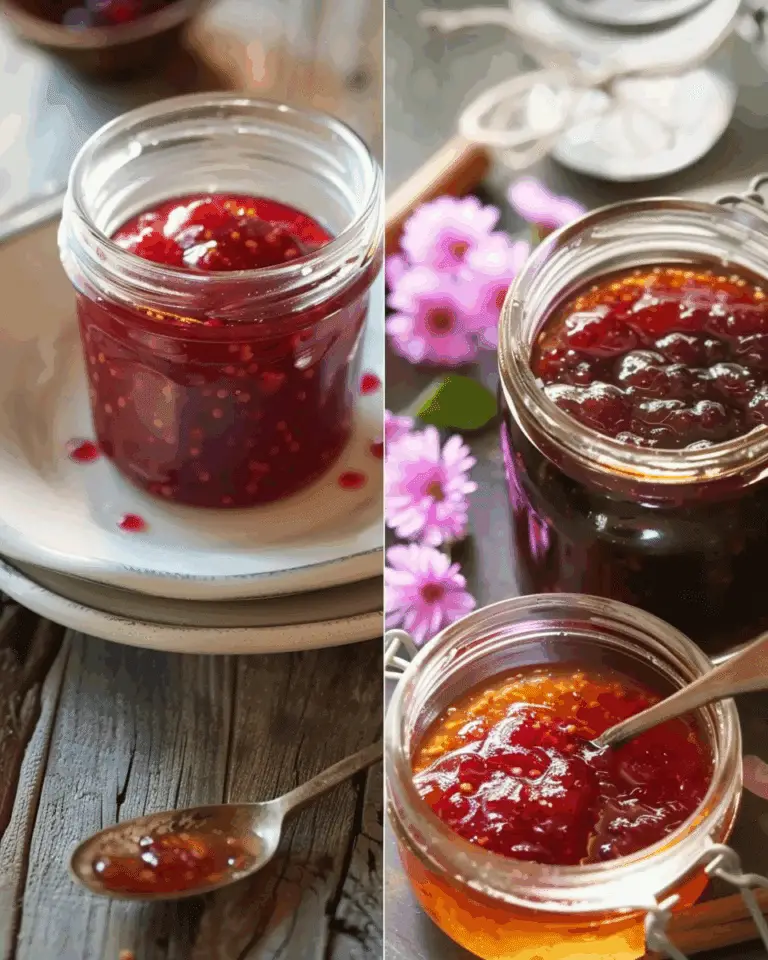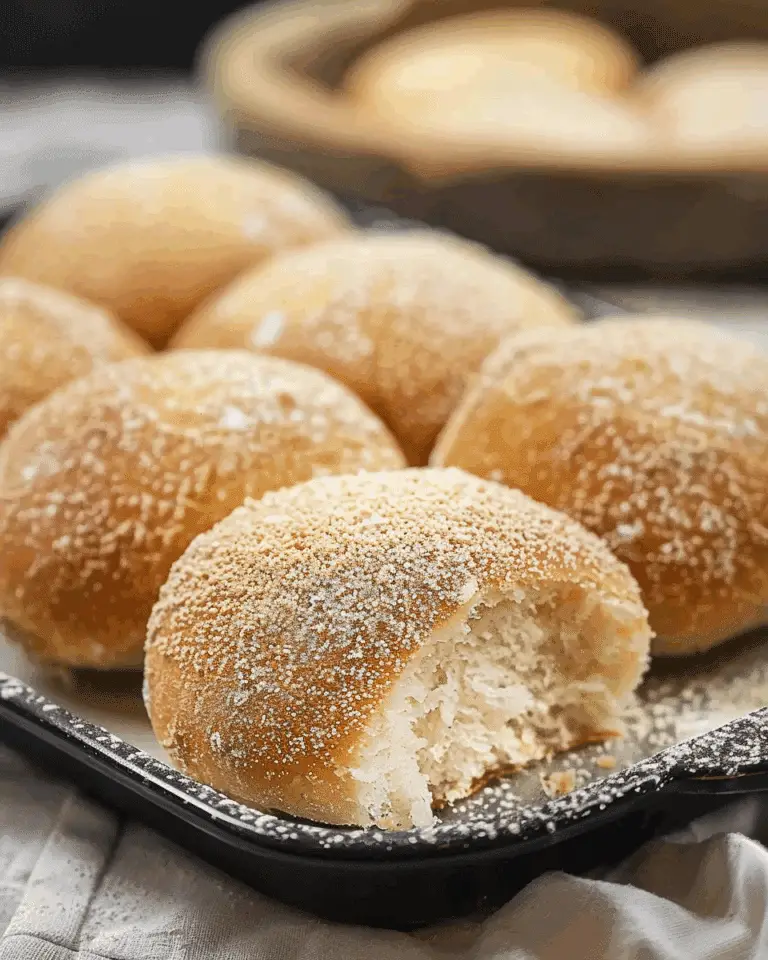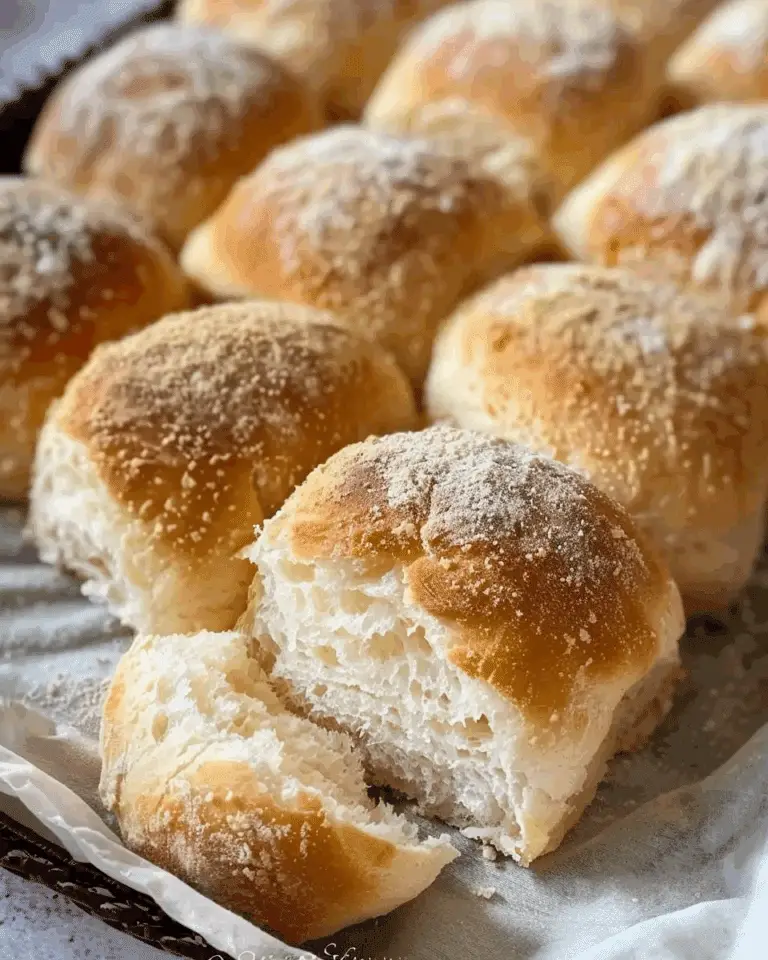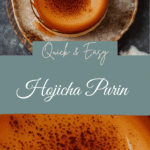This hojicha purin is a smooth, elegant Japanese-style custard pudding, deeply infused with the smoky, roasted aroma of hojicha tea. It’s a comforting dessert with a refined flavor profile, perfectly balancing the bitterness of roasted green tea with the gentle sweetness of custard and caramel. I love how it feels indulgent yet light, with a melt-in-the-mouth texture and just a touch of earthiness.
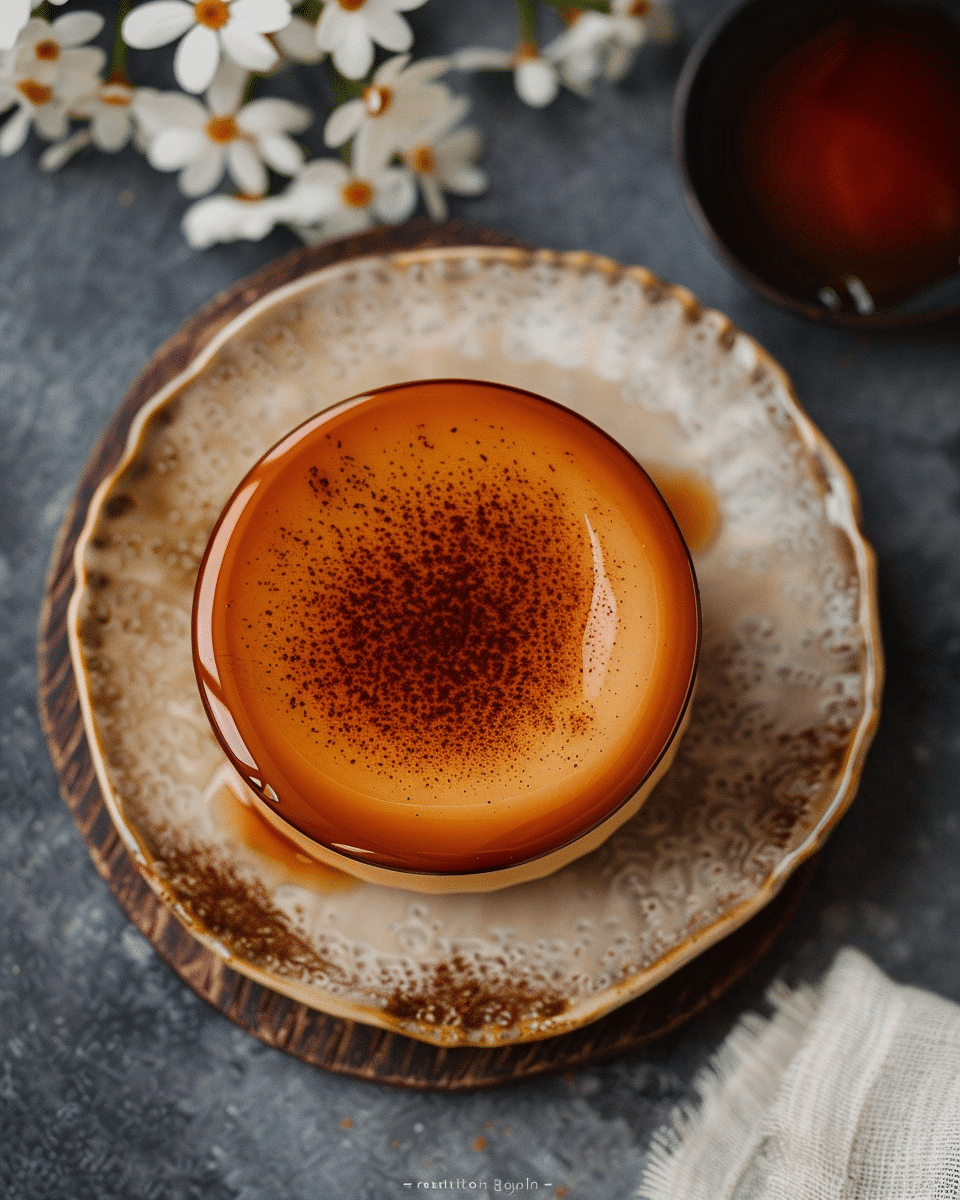
Why You’ll Love This Recipe
I find this recipe perfect when I want something that feels fancy without being overly complicated. The roasted hojicha adds a warmth and nutty depth that makes this dessert stand out from typical flans or puddings. It’s also less sweet than many Western versions, which I appreciate. The custard is soft, light, and creamy, with a beautiful jiggle, while the caramel adds a satisfying bittersweet finish. I enjoy serving this chilled after dinner—it’s the kind of dessert that makes a quiet evening feel special.
Ingredients
(Here’s a tip: Check out the full list of ingredients and measurements in the recipe card below.)
-
Granulated sugar (for caramel and custard)
-
Whole milk
-
Heavy cream
-
Large eggs
-
Hojicha tea (loose leaf or tea bags)
-
Salt
Directions
-
I start by preheating the oven to 300°F (150°C).
-
Then I make the caramel: I heat granulated sugar in a saucepan over medium heat, stirring constantly. Once it melts and reaches a dark amber color, I pour it into the bottom of my molds.
-
For the custard, I heat the milk and cream together just until simmering, remove from heat, and steep the hojicha for 10 minutes. I make sure to squeeze out the tea before discarding it.
-
While that’s steeping, I bring a pot of water to a simmer for the water bath.
-
I whisk the eggs with sugar until fully combined. Then, I slowly temper the eggs by adding the warm hojicha milk little by little, whisking constantly.
-
After combining everything, I cook the mixture again briefly over low heat—just for 30 seconds—and then strain it through a fine mesh sieve.
-
I pour the custard into the prepared molds, pop any bubbles on the surface, and place them in a deep baking dish.
-
I fill the baking dish with hot water to halfway up the molds and bake for 35 to 45 minutes, checking at the 30-minute mark.
-
Once baked, I chill them in the refrigerator for at least 2 to 3 hours before unmolding.
-
To serve, I run a knife along the edges and flip the purin onto a plate. A gentle jiggle usually helps release it perfectly.
Servings and timing
This recipe makes 6 servings.
Prep Time: 30 minutes
Cook Time: 40 minutes
Total Time: 1 hour 10 minutes
Variations
-
I sometimes substitute hojicha with genmaicha or earl grey for a different tea aroma.
-
If I want a dairy-free version, I’ve used oat milk and coconut cream, though the texture becomes slightly softer.
-
For extra indulgence, I top it with whipped cream or a sprinkle of kinako (roasted soybean flour).
-
I’ve tried baking it in one large mold instead of individual servings—it works great but needs a longer baking time.
Storage/Reheating
I keep the purin in their molds in the refrigerator if I’m not serving them right away. They stay fresh for 2 to 3 days, but I try to enjoy them within 24 hours for the best texture and flavor. I don’t recommend reheating purin; it’s best served cold straight from the fridge. Once removed from the mold, I don’t store it long—its delicate structure can start to collapse.
FAQs
What is the difference between hojicha and matcha?
Hojicha is roasted green tea, which gives it a smoky, nutty flavor, while matcha is powdered, unroasted green tea with a bright, grassy taste. I find hojicha milder and lower in caffeine, which works beautifully in creamy desserts like purin.
Can I use loose leaf hojicha instead of tea bags?
Yes, I use 8 grams of loose leaf hojicha when I don’t have tea bags. I just make sure to strain it well after steeping.
How do I know when the purin is perfectly baked?
I gently shake the mold—if it jiggles slightly in the center but looks set on the edges, it’s ready. I avoid overbaking because it can make the texture grainy.
Can I make this ahead of time?
Yes, I often make it the night before. It needs a few hours to chill, so making it ahead is actually ideal.
What molds work best for purin?
I prefer small aluminum cupcake molds because they conduct heat evenly and release the purin easily. Ceramic or glass molds work too but may require a longer baking time.
Conclusion
Hojicha purin is one of those desserts that feels both comforting and sophisticated. The roasted tea brings something unique and unexpected, while the silky custard delivers classic indulgence. I love how it comes together with just a few ingredients and makes an impressive finish to any meal. Whether I’m serving it for guests or just treating myself, this recipe always brings a little calm and joy to my day.
Print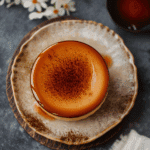
Hojicha Purin
- Total Time: 1 hour 10 minutes
- Yield: 6 servings
- Diet: Vegetarian
Description
Hojicha Purin is a silky Japanese custard pudding infused with roasted green tea and topped with a layer of bittersweet caramel. It’s an elegant, less-sweet alternative to flan with a unique earthy flavor and delicate texture.
Ingredients
- 1/2 cup granulated sugar (for caramel)
- 1 1/2 cups whole milk
- 1/2 cup heavy cream
- 8 g hojicha tea (loose leaf or 2 tea bags)
- 3 large eggs
- 1/3 cup granulated sugar (for custard)
- Pinch of salt
Instructions
- Preheat oven to 300°F (150°C).
- To make caramel, heat 1/2 cup sugar in a saucepan over medium heat, stirring until it turns dark amber. Immediately pour into bottom of 6 custard molds.
- In another saucepan, heat milk and cream until just simmering. Remove from heat, add hojicha, and steep for 10 minutes. Squeeze tea bags or strain leaves, then discard.
- In a bowl, whisk eggs, 1/3 cup sugar, and a pinch of salt until combined. Slowly temper eggs by adding the warm hojicha milk gradually while whisking.
- Briefly heat the custard mixture over low heat for 30 seconds, then strain through a fine sieve into a clean bowl.
- Pour custard into prepared molds. Pop bubbles on the surface using a toothpick.
- Place molds in a deep baking dish. Fill the dish with hot water to halfway up the sides of the molds.
- Bake for 35–45 minutes, checking doneness at 30 minutes. The center should jiggle slightly but look set.
- Cool at room temperature, then refrigerate for at least 2–3 hours.
- To serve, run a knife along the mold edges and invert onto a plate. Jiggle gently to release the purin.
Notes
- Use loose leaf hojicha or tea bags—strain well for a smooth texture.
- Don’t overbake to avoid grainy custard.
- Top with whipped cream or kinako for extra flavor.
- Dairy-free alternatives like oat milk and coconut cream can be used.
- Best enjoyed within 24 hours for optimal texture.
- Prep Time: 30 minutes
- Cook Time: 40 minutes
- Category: Dessert
- Method: Baking
- Cuisine: Japanese
Nutrition
- Serving Size: 1 purin
- Calories: 190
- Sugar: 18g
- Sodium: 60mg
- Fat: 10g
- Saturated Fat: 5g
- Unsaturated Fat: 4g
- Trans Fat: 0g
- Carbohydrates: 21g
- Fiber: 0g
- Protein: 5g
- Cholesterol: 115mg

